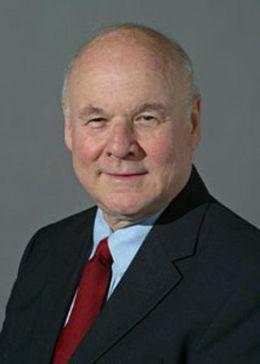Blueprints of a rehabilitation center in the South China Sea sit on the floor and a sketch of a Wounded Warriors center for soldiers with post-traumatic stress disorder leans against the wall.
George Mann points out a few other projects among the clutter of Langfords fourth floor Center for Health Systems and Design studio, pausing here to explain the human relationships behind each hospital models creation.
“We shape our buildings, and afterward our buildings shape us,” said Mann, quoting Winston Churchill. “If youre in pain and distress with your sickness, the physical environment has a large impact on your recovery.”
It is a message that Mann Texas A&M architecture professor and Skaggs-Sprague Endowed Chair in Health Facilities Design has taught his students for the past 47 years.
The affect that a physical environment can have on patients has revolutionized the way health care architecture is taught, giving A&M a leading role in redesigning the way health care is approached in the U.S. and abroad.
A Healthy Foundation
Mann began teaching at A&M in the mid 1960s. At the time, he agreed to teach only temporarily, but nearly a half century later he has built a healthcare architecture program that produces graduates who reshape hospital design and its role in medicine.
A former professor of mine who worked at A&M called and asked for me to start a [health care architecture] program, Mann said. I only agreed to stay for one year, but that was in 1966.
Manns work is now evident in Architecture for Health studios meant to give A&M students the experience needed to become leaders in the field of health care architecture. These are coupled with a semester-long lecture series open to the public that covers a specific topic in modern health.
This semester the emphasis was on childrens health care. Manns students partnered with HKS Architects to design the Childrens Hospital of Richmond, Va. The hospital will be constructed with HKSs original design, but Silvia Izaguirre, one of Manns students and senior environmental design major, said the experience of working with such a large architecture firm has been rewarding.
“It is an opportunity to be involved in a real life project,” Izaguirre said. “Were not just looking at designing a building or a hospital, but were looking at how it affects the community. The design isnt just for the client, but for the user: the sick child and their family.”
Izaguirre said working with an actual design firm made the project unique because its architects and project managers visited the studio to critique the students work and offer advice. Many of the design challenges that Izaguirre and the other students faced had also been experienced by the professional architects, and the dialogue between the two groups provided real world experience not commonly found within a degree plan.
Isaura Rodriguez, Izaguirres studio partner and senior environmental design major, said designing sustainability into the childrens hospital was a focus of the project, not only for the green aspect, but for the patients health as well.
“We wanted to provide not only solar panels but also green roofs, hanging gardens and green walls because its been shown that they raise the buildings air quality,” Rodriguez said.
Redesigning Health
Many of Manns students have gone on to great success in the health care architecture field and now hold important positions among the industrys design firms, Mann said. Over the years Mann has built a network with these former students who now give back to his program with their time and experience.
“[A&Ms health care architecture program] is one of the most unique not only in the U.S but in the world. In health care design, Texas A&M is the gold standard,” said Edward Huckaby, senior planning advisor for FKP Architects and Class of 1973.
Huckaby said a hospital is a microcosm of the human experience and effective healthcare needs to begin with the buildings it is practiced in.
“In a hospital people are born, they die, they get sick and they heal,” Huckaby said. “Supplies and medicine need to be moved quickly and effectively and waste needs to be disposed of. All of the design aspects that go into a city are shared with health care architecture.”
Both Huckaby and Mann agree that this teaching mindset and the experience the Aggie Network provides have made A&M a highly respected name in the field of health care architecture.
“About 1,500 to 2,000 hospitals have been designed by A&M graduates [of my program],” Mann said.
Looking Forward
Mann said current and future healthcare challenges will revolve around accessibility to affordable healthcare for growing populations in the U.S and the world. Such challenges are already being addressed by Manns students.
Southern Ellis, Class of 2009 with a masters degree in architectural design, helped design a rural clinic in Tanzania that he said has the potential to save thousands of lives by providing the facilities needed to perform minor surgical procedures and blood transfusions.
Fourteen of Manns students designed and proposed an 80,000 square foot clinic and wellness center for the Faith Family Clinic and Wellness Center in San Antonio, Texas. Meant to care for the uninsured and underinsured, the clinic and center emphasize that both treatment and prevention are important to proper health.
Professor’s studios reshape hospital design
April 1, 2013

0
Donate to The Battalion
$2790
$5000
Contributed
Our Goal
Your donation will support the student journalists of Texas A&M University - College Station. Your contribution will allow us to purchase equipment and cover our annual website hosting costs, in addition to paying freelance staffers for their work, travel costs for coverage and more!
More to Discover









